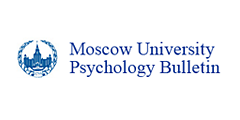
-
Coping Responses during the COVID-19 Pandemic: A Cross-Cultural Comparison of Russia, Kyrgyzstan, and PeruVoronin, I.A.; Manrique-Millones, D.; Vasin, G.D.; Millones-Rivalles, R.B.; Fernández-Ríos, N.; Marakshina, Yu.A.; Lobaskova, M.M.; Symanyuk, E.E.; Pecherkina, A.A.; Ageeva, I.A.; Lysenkova, I.A.; Ismatullina, V.I.; Sitnikova, M.A.; Malykh, S. B.; Manrique-Pino, O.PDF HTML8480“ CITE
Voronin, I.A., Manrique-Millones, D., Vasin, G.M., Millones-Rivalles, R.B., Manrique-Pino, O., Fernández-Ríos, N., Marakshina, Yu.A., Lobaskova, M.M., Symanyuk, E.E., Pecherkina, A.A., Ageeva, I.A., Lysenkova, I.A., Ismatullina, V.I., Sitnikova, M.A., Malykh, S.B. (2020). Coping Responses during the COVID-19 Pandemic: A Cross-Cultural Comparison of Russia, Kyrgyzstan, and Peru. Psychology in Russia: State of the Art, 13(4), 55-74.
copied
-
Background. The COVID-19 pandemic has subjected people around the world to severe stress, evoking a variety of coping responses. Coping responses can be broadly classified into four strategies: 1) problem-focused coping; 2) emotion-focused coping; 3) socially supported coping; and 4) avoidance. While there is a wide variability of individual coping responses, to some extent they are also culturally specific.
Objective. This study aimed to compare the differences in the prevalence and factor structure of coping responses during COVID-19 pandemic in three countries: Russia, Kyrgyzstan, and Peru.
Design. The sample included 501 participants from Russia, 456 participants from Kyrgyzstan, and 354 participants from Peru. The mean age of participants was 28 years in Russia (SD = 13.5); 24 years in Kyrgyzstan (SD = 10.0); and 30 years in Peru (SD = 12.3). In Russia and Kyrgyzstan, coping strategies were assessed with an abbreviated Russian adaptation of the COPE (Coping Orientations to Problems Experienced) questionnaire. In Peru, coping responses were assessed using the Spanish version of the Brief COPE questionnaire. The average scores from fifteen COPE scales were used as the input data for linear modelling and factor analysis.
Results. The coping scores varied substantially within each country. Differences between countries accounted for 17.7% of the total variability in religious coping; 15.8% in acceptance; 13.9% in mental disengagement; and less than 7% in the other coping strategies. No difference in the prevalence of coping responses was found between Russian and Kyrgyz participants after accounting for age and gender. In all three countries the coping responses were associated with the same four coping domains: problem-focused coping, socially supported coping, avoidance, and emotion-focused coping. Four factors explained up to 44% of the total variation in the COPE scores. Religious coping and mental disengagement were classified into different coping domains in the three countries.
Conclusion. The results suggest that during the COVID-19 pandemic, people from different countries apply the full range of coping responses within the four universal coping strategies. Religious coping and mental disengagement differed the most across the countries, suggesting that some coping behaviors can take on different roles within the system of coping responses to stressful events. We attribute these differences to differing cultural and socioeconomic characteristics, and the different measures taken by governments in response to COVID-19.
DOI: 10.11621/pir.2020.0404
Keywords: coping behavior; coping strategies; COPE; cross-cultural differences; factor structure
-









